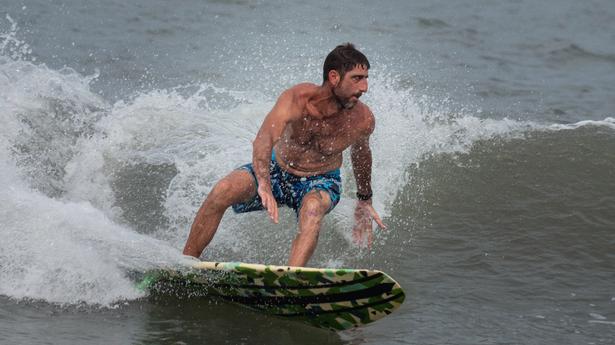
Riding the high wave: Why Chennai surfers are making their own surfboards
The Hindu
The demand for surfboards is picking up as the sport gains popularity along the coast. Chennai’s surfers explain how they became, self-taught, accidental shapers
“Travellers order boards from me to take it back to their country and hang it up in their homes as a reminder of their time in Kovalam,” says Sekar, who picked up surfboard shaping last year, after which he launched Kove Krafts along with his champion surfer girlfriend, Shrishti Selvam.
It’s 6pm, and Sekar has finished surfing and training for the day. Hitting play on his phone, he settles down at his workshop in Kovalam fishing village as ‘Moongil Thottam’s beats fill the space. Surfboard shaping is a meditative and calming process for him. “It’s easy to get immersed while shaping. My favourite part of the process is reducing the block of foam to a nicely shaped board. I’m completely in my zone when I’m listening to music and creating with my hands,” adds Sekar, who makes boards out of EPS foam as well as balsa wood.
For almost all the local surfers from Covelong, procuring a surfboard was a challenge when they started out about a decade ago. The sport was nascent in India, and surfboards were tough to source. “We were only able to buy them from those coming from abroad. That is why I started shaping so I could make boards for myself,” says Sekar.
In 2012, when Australian surfer Dave Hearns visited India and shaped a board during his stay in Kovalam, he became an inspiration for surfers like Sekar and Santhosh Moorthy. Santhosh, who is one of India’s first shapers, was a stone carver in Mamallapuram for six years. He spent his days fishing and carving intricate shapes on stone, which he then sold from his cousin’s store.
Things changed when Dave saw him surfing using a block of wood, and gave him his surfboard to practise with. “As a thank you gift, I made Dave a small stone pendant in the shape of a surfboard. That’s when he suggested we should start making surfboards in India,” recalls Santhosh. As a result, Temple Surf Boards was born in 2014. It had a good run before shutting down a few years back. Dave went back to Australia and eventually, Santhosh launched his own brand, Alai surfboards, in 2019. “My stone carving skills come in handy in this profession,” he says, adding “They help me understand symmetry and shine.”
Surfboard shaping is still purely a handmade business in India. Though the demand for boards is picking up as surfing gains popularity along the coast, it is still not big enough to warrant setting up factories where they can be mass produced. Surfboards here are created on a made to order basis, with some of them making around three a month. They are competitively priced, with shapers charging anywhere around ₹17,000 to ₹25,000 and upwards (barring Bali in Indonesia, prices abroad can start at ₹70,000 and go upto a lakh or more).
Creating a board can take between 15 to 20 days depending on the specifications requested by clients. Some even ask for elaborate art work or their initials. “It always helps to watch a video of them surfing to get a better idea of their surfing ability. Factors like the surfer weight, height and their performance level influence the final measurements of the surfboard,” says Sekar, for whom the most challenging part is fixing the fin plug system into the board. The fins play a vital role in the speed and direction of the board so it is important that they are perfect.













